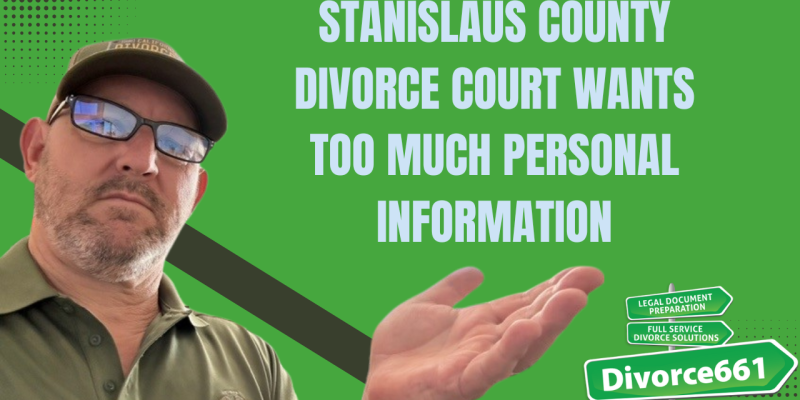What to Know About Updating Your Social Security Information After Divorce
Divorce marks a significant transition in life, bringing with it not only emotional and financial changes but also important legal and administrative updates. One often overlooked but crucial task after your divorce is finalizing the update of your Social Security information, especially if you have changed your name during the divorce process. I’m Tim Blankenship from Divorce661, and in this article, I’ll guide you through everything you need to know about updating your Social Security records after divorce to avoid unnecessary complications down the road.
Why Updating Your Social Security Information Matters
After a divorce, many people focus on dividing assets, adjusting custody arrangements, and updating their driver’s licenses or passports. However, the Social Security Administration (SSA) must be your first stop if you’ve changed your name. Why? Because failing to update your Social Security information can trigger a domino effect of issues including mismatched records, tax filing problems, employment verification headaches, and delays in receiving Social Security benefits in the future.
When the SSA’s records don’t match your current legal name, other government agencies and employers may reject your identification documents, causing delays and frustration. This is why the SSA update should be your top priority when it comes to post-divorce paperwork.
When and How to Update Your Social Security Information
If your divorce judgment includes restoring your former name or changing your name to something new, you must officially update this with the Social Security Administration. It’s important to do this before you update any other forms of identification, such as your driver’s license or passport. Most state and federal agencies require that your Social Security records match the name on your other IDs.
The Process: Applying for a New Social Security Card
To update your name with the SSA, you need to complete Form SS-5, which is the official application for a new Social Security card. Here is what you will need to provide:
- Proof of your legal name change: This is typically your divorce judgment or decree that clearly shows your name change.
- Proof of identity: Valid photo identification such as your driver’s license or passport.
- Proof of citizenship: Usually a birth certificate or passport; this is sometimes requested depending on your situation.
Once your application is approved, the SSA will issue a new Social Security card with your updated name. It’s important to note that your Social Security number itself will not change—only the name on the card will be updated to reflect your new legal name.
A Real Client Story: The Importance of the Right Order
Recently, we assisted a client who learned this the hard way. She changed her name after divorce but tried to update her driver’s license before correcting her Social Security record. This misstep caused a cascade of delays not only with the Department of Motor Vehicles but also with the IRS and passport office. Because the SSA’s records didn’t match her new name, every agency she approached flagged her information as inconsistent.
We stepped in and guided her through the proper sequence, starting with the Social Security update. Once her SSA record was corrected, updating her driver’s license and passport went smoothly, saving her time, stress, and unnecessary headaches.
Why You Should Work With Divorce661 for Your Post-Divorce Updates
At Divorce661, we understand that divorce is more than just signing papers. It’s about moving forward confidently without being bogged down by bureaucratic red tape. That’s why we don’t just file your divorce paperwork—we walk you through the entire post-divorce process, including:
- Step-by-step name change instructions
- Checklists for updating government records and identification
- Guidance on the right order to update your documents
- Answers to your questions about Social Security and other agencies
Our goal is to make your transition as smooth as possible. We offer flat-fee divorce services with comprehensive post-divorce support, and we provide 100% remote help across California. Whether you need help with your Social Security update or other personal document changes, we’re here to help you avoid common pitfalls and get everything done right.
Step-by-Step Guide: Updating Your Social Security Information After Divorce
To make this process clear and manageable, here’s a simple checklist you can follow after your divorce is finalized:
- Review your divorce judgment: Confirm if your judgment includes a legal name change or restoration of your former name.
- Gather required documents: Collect your divorce decree, proof of identity (driver’s license or passport), and proof of citizenship if necessary.
- Complete Form SS-5: Download and fill out the application for a new Social Security card, available on the SSA website.
- Submit your application: You can mail your documents or visit your local Social Security office in person. Some offices may require an appointment.
- Wait for confirmation: Once processed, you will receive your new Social Security card in the mail with your updated name.
- Update other IDs: After SSA confirms your name change, update your driver’s license, passport, bank accounts, and other personal records.
Common Questions About Social Security Name Changes After Divorce
Will my Social Security number change after divorce?
No. Your Social Security number stays the same for life. The only change is the name associated with your number.
Can I update my Social Security name without a divorce decree?
Generally, the SSA requires legal documentation of your name change, which in the case of divorce is your divorce decree. Without it, you may need a court order or marriage certificate if you are changing your name for other reasons.
How long does it take to get the new Social Security card?
After submitting your application, it typically takes 7 to 14 business days to receive your new card by mail.
Is there a fee to update my Social Security information?
No, updating your name with the SSA is free of charge.
Moving Forward: Avoiding Delays and Confusion
Divorce can be overwhelming, but staying organized and following the right steps can save you time and stress. Remember, updating your Social Security information should be your first priority if your name has changed. This single step ensures that all other government and financial institutions will recognize your new identity without issue. It’s the foundation for updating everything else, from your driver’s license to your tax records.
At Divorce661, we’re committed to helping you navigate this process smoothly. Our clients appreciate the peace of mind that comes from knowing they’re doing everything in the correct order and with expert guidance. If you’ve recently divorced and aren’t sure where to start with your post-divorce updates, visit divorce661.com to schedule a free consultation. We’ll help you get everything in order so you can move forward confidently without unnecessary complications.
Final Thoughts
Updating your Social Security information after divorce might not be the first thing on your mind, but it’s one of the most important steps to protect your financial and legal well-being. Failing to update your records can lead to frustrating delays and mismatches that ripple across multiple agencies.
Follow the right process: update SSA records first with Form SS-5 and your divorce decree, then proceed to update your other identification documents. This simple but crucial order of operations can save you time, money, and stress.
If you want expert help navigating the post-divorce paperwork maze, including Social Security updates, Divorce661 is here for you. Don’t hesitate to reach out and get the support you need to move forward smoothly.
“We helped a client reverse the chaos by starting where it matters: Social Security.” – Tim Blankenship, Divorce661
Remember, your Social Security number stays the same — only your name changes. By taking care of this early, you ensure that your new life chapter begins with everything in order.





